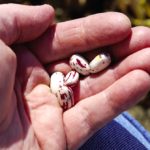
The challenge of edible beans
In this sector, if you’re going to grow them, you have to be prepared to grow them well
Final words on dicamba
The big concern for herbicide companies is to keep Xtend technology for years to come

The Xtend balancing act
Dicamba-resistant technology works, but it’s not simple and it requires more learning than glyphosate-tolerant systems

Tough news on fleabane
It takes a well thought out plan to keep glyphosate-resistant Canada fleabane in check

Rebate roundup for Eastern Canada
A quick glimpse at programs and opportunities available to growers for 2017

Who’s to blame?
Variable-rate technology is getting adopted, but not nearly as quickly as many farmers would like. Finally, this may soon change.

A biomass corn-stalk co-op
Farmers need to invest now if the new corn-stalk project is to go ahead

Improving nature
Corn and the environment can work hand-in-hand, and thanks to our farmers, in many cases, they already do

Sulphur: Neglect it at your cost
Sulphur levels are falling in our soils due to reduced air pollution. It’s time to start monitoring yours

Manage down-force
New monitors and individual-unit controls give growers a better shot at top yields


